2010, ‘s-Hertogenbosch, Netherlands
Saint John
Timber, oxblood, corrugated iron, lights, solar panel, 20 x 20 x 6 m
Commissioned by Dertien Hectare for the exhibition The woods that see and hear
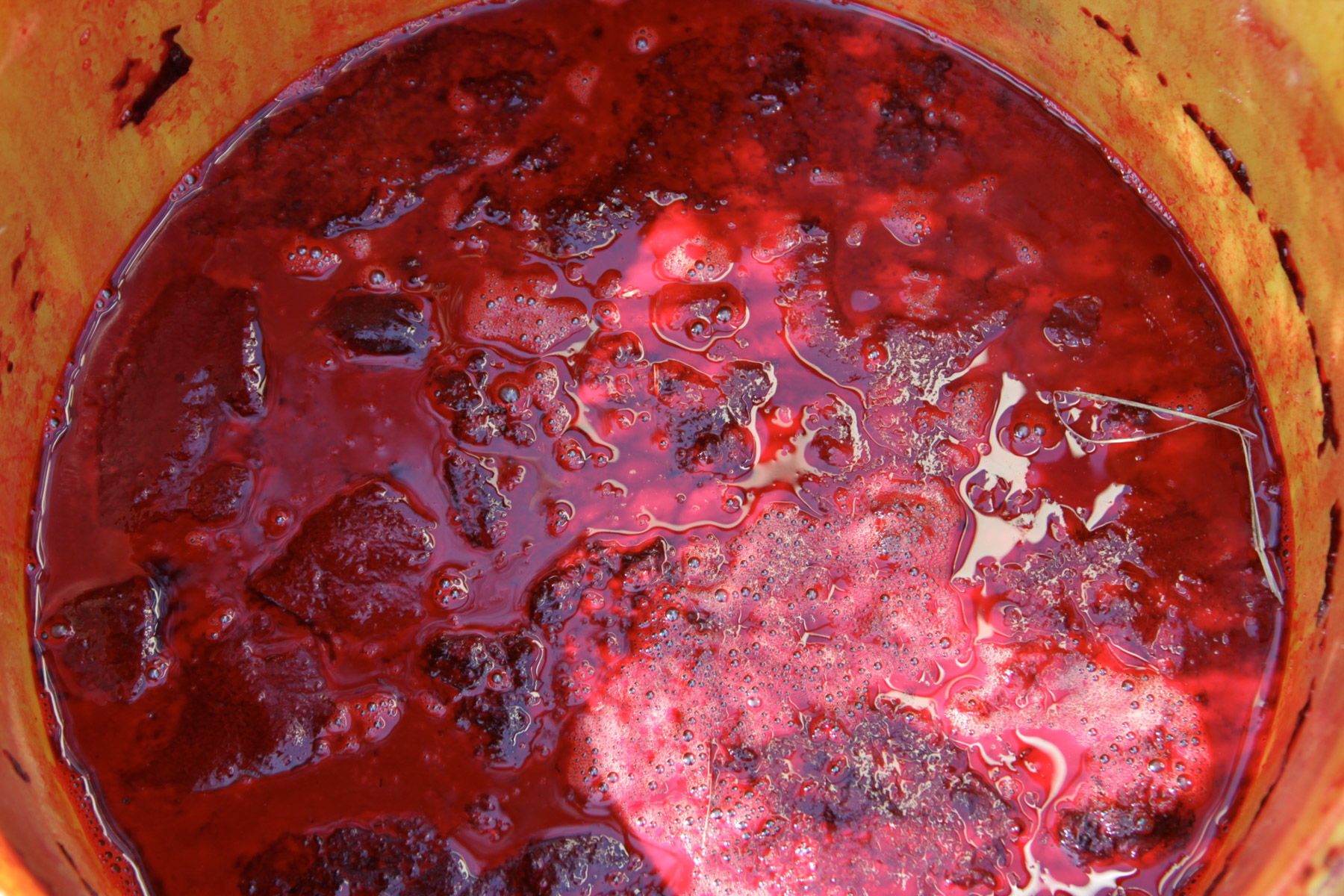
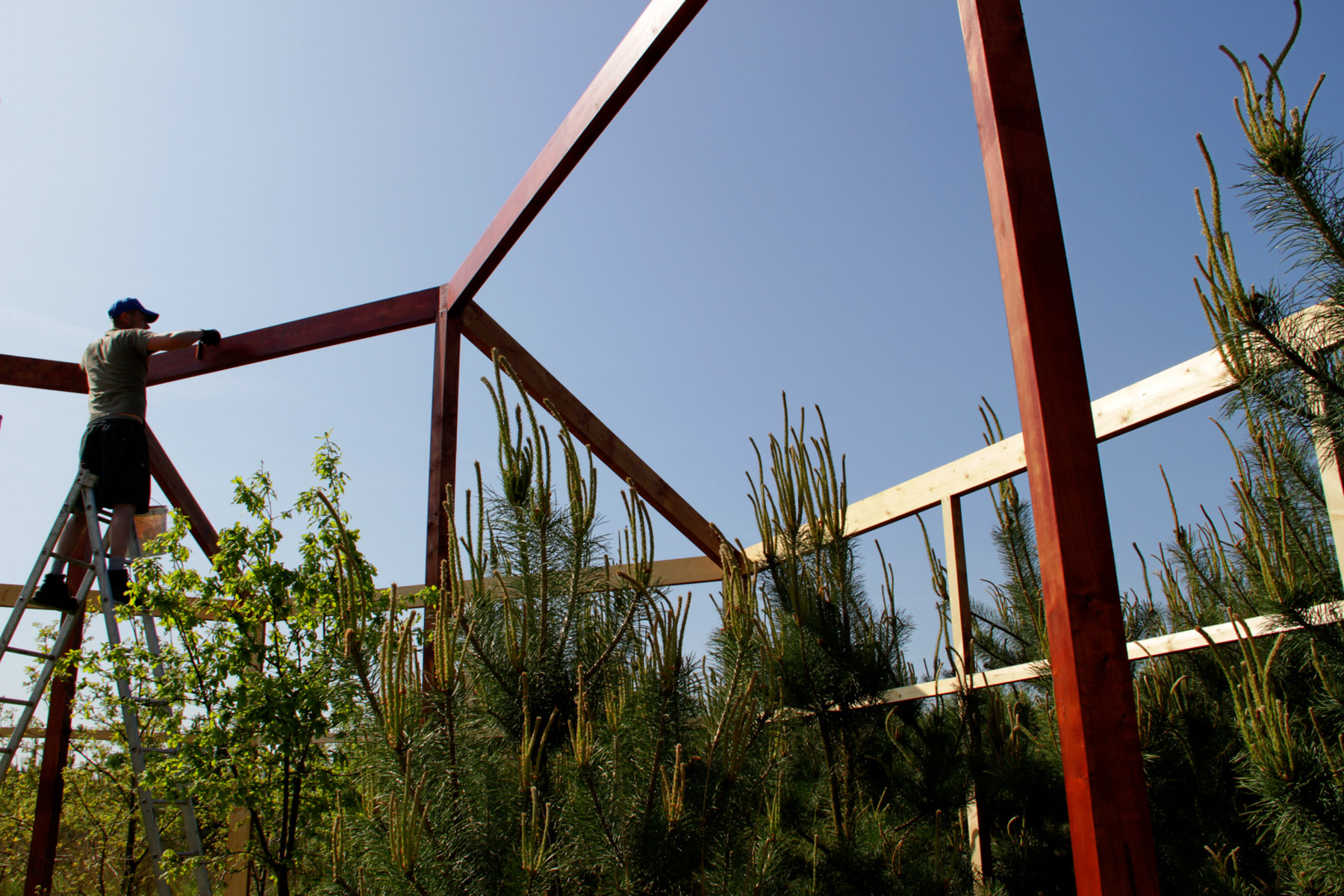

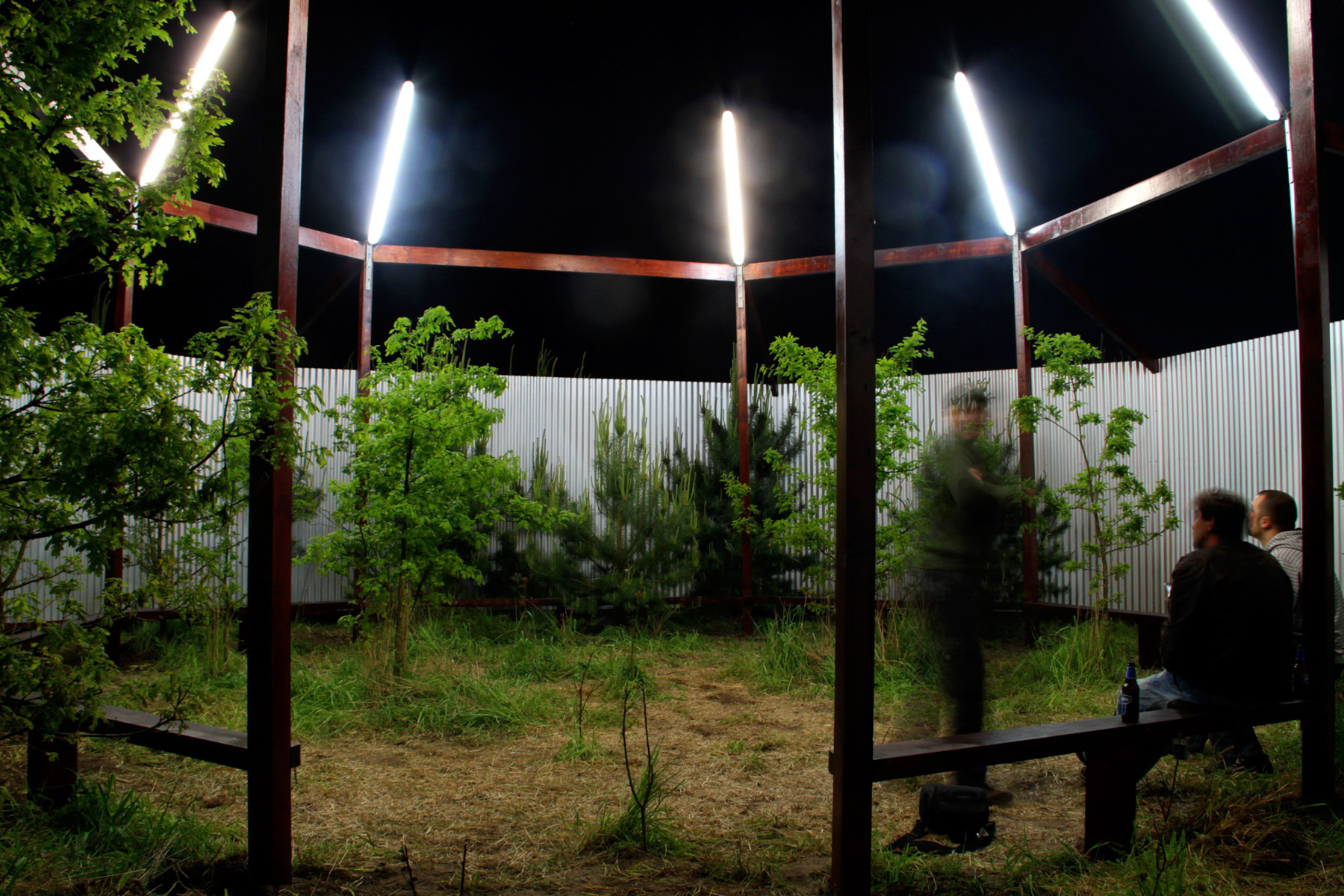


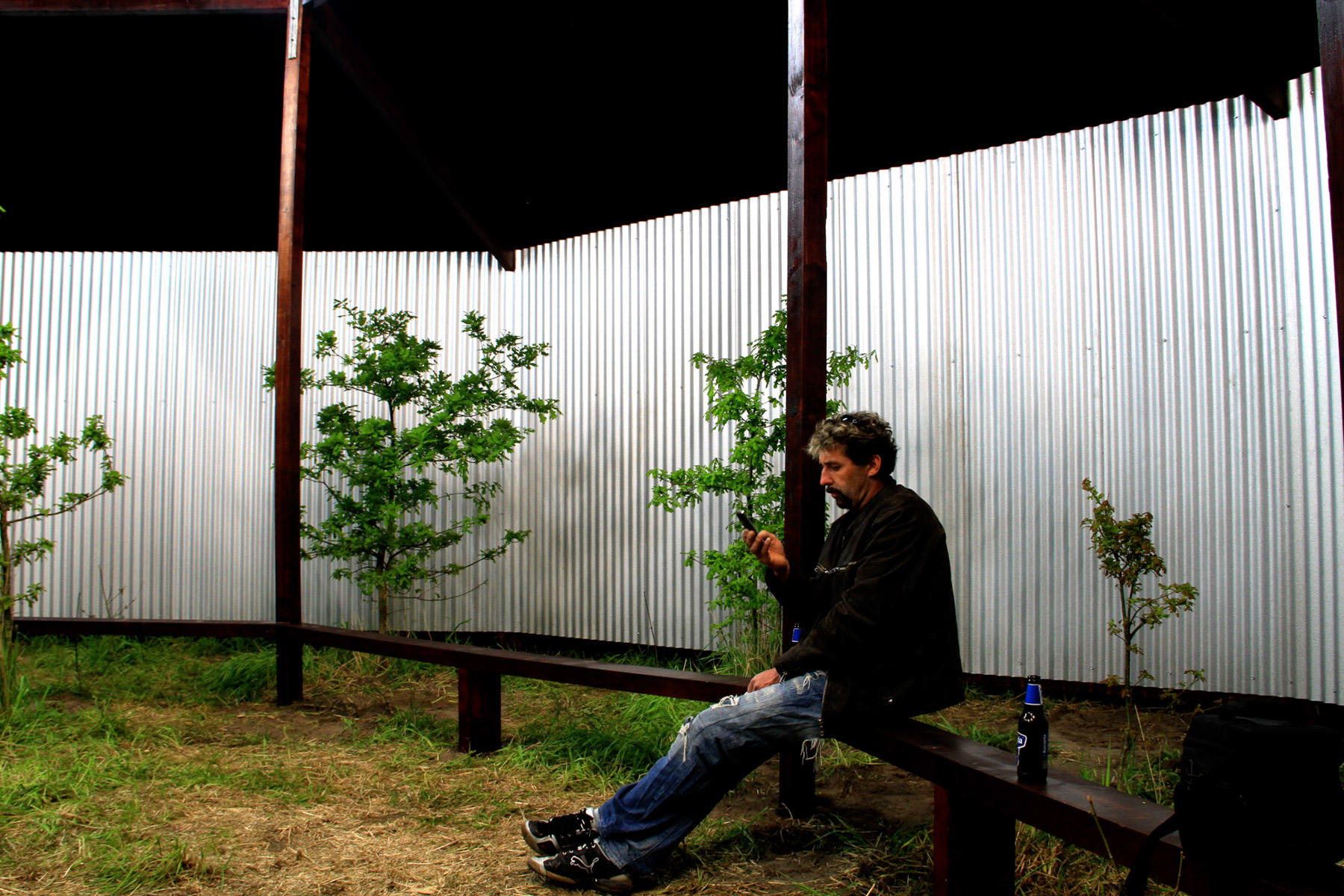
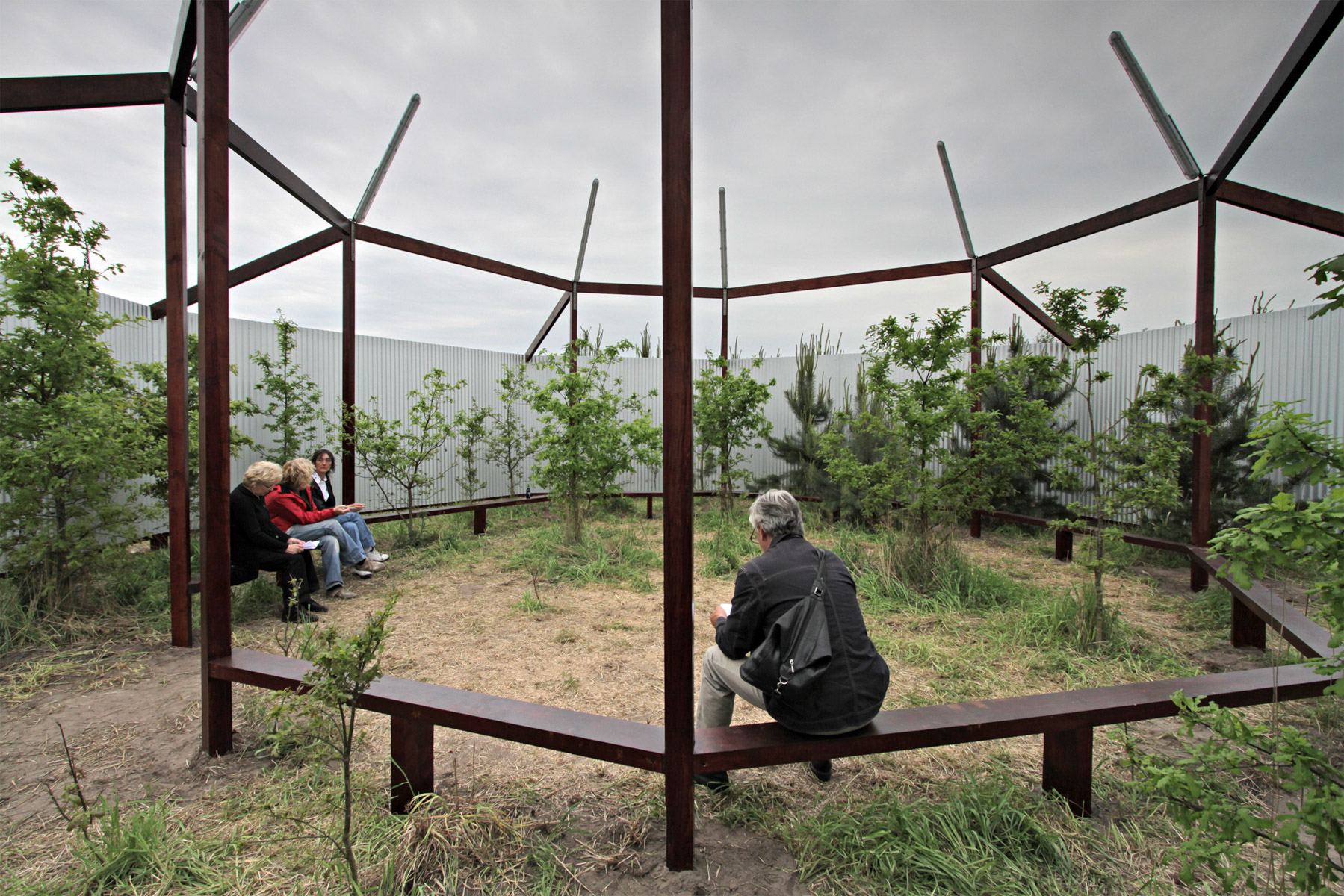

The next in the Morisons’ series of temporary communal structures, Saint John sat at the centre of Dertien Hectare, a regenerating recreational forest newly planted on the site of a former intensive pig farm in the rural area of Heeswijk-Bernheze, outside the city of ’s-Hertogenbosch, in the south of the Netherlands. The work was created for the exhibition
The woods that see and hear, held at Dertien Hectare in the summer of 2010 and curated by Sarah Farrar, currently head of curatorial and learning at Auckland Art Gallery. The show highlighted the land as a living form of archaeology that registers the impact of human migration, prosperity, technological developments, changing environmental values, governmental policy, commercial interests, and the shifting boundaries of urban and rural areas. The southern Netherlands, a region traditionally dominated by farming and agricultural industries, has gone through significant social, economic, and ecological changes in recent decades, including an influx of migrant workers from Poland and other eastern European countries, a source of tension with the native population.
The structure of Saint John – somewhat simple in its design and construction – draws upon the vernacular form of the illegal two-up gambling stadiums of Australia, taking their double ring shape to frame an area of woodland and to create an enclosed meeting place. The corrugated iron that formed the walls was taken from the traditonal cladding of these venues, though here it also references the agricultural buildings that once sat on the site, as do the long industrial flourescent tubes that rise up from the structure and light up the night sky. The timber framing is finished in the Dutch vernacular tradition of using oxblood as a stain to preserve wood, a practice that has all but died out in the country. The name of the work is derived from the Polish midsummer celebration of Noc Swietojanska, or St John’s Night.
The woods that see and hear, held at Dertien Hectare in the summer of 2010 and curated by Sarah Farrar, currently head of curatorial and learning at Auckland Art Gallery. The show highlighted the land as a living form of archaeology that registers the impact of human migration, prosperity, technological developments, changing environmental values, governmental policy, commercial interests, and the shifting boundaries of urban and rural areas. The southern Netherlands, a region traditionally dominated by farming and agricultural industries, has gone through significant social, economic, and ecological changes in recent decades, including an influx of migrant workers from Poland and other eastern European countries, a source of tension with the native population.
The structure of Saint John – somewhat simple in its design and construction – draws upon the vernacular form of the illegal two-up gambling stadiums of Australia, taking their double ring shape to frame an area of woodland and to create an enclosed meeting place. The corrugated iron that formed the walls was taken from the traditonal cladding of these venues, though here it also references the agricultural buildings that once sat on the site, as do the long industrial flourescent tubes that rise up from the structure and light up the night sky. The timber framing is finished in the Dutch vernacular tradition of using oxblood as a stain to preserve wood, a practice that has all but died out in the country. The name of the work is derived from the Polish midsummer celebration of Noc Swietojanska, or St John’s Night.
The structure itself was built over two weeks using labour drawn from the itinerant population of eastern European workers who reside in a trailer park that sits at the edge of the nearby town. Its form was tailored towards the social habits and traditions of this portion of the population. To that end, it was a meeting place, most particularly a night-time one, as suggested by its lights, which turned on at dusk and off again in the early morning. It offered a place in the woods for locals of all backgrounds to congregate, to talk, and to drink beer.
‘Picking up on an undercurrent of tension in the local community between the traditional Dutch farming families and the recent influx of Polish migrants who work officially, and unofficially, in the area, the artists arranged for three Polish construction workers – Adam Owczarz, Piotr Wlodarvczyk, and Waldemar Wozny – to build Saint John
over a two-week period. The lack of shared language between the artists and the workers necessitated an ad hoc style
of communication founded on a common understanding of
a strong work ethic, goodwill, and hard cash.’
Sarah Farrar, Head of Curatorial and Learning, Auckland Art Gallery
‘Picking up on an undercurrent of tension in the local community between the traditional Dutch farming families and the recent influx of Polish migrants who work officially, and unofficially, in the area, the artists arranged for three Polish construction workers – Adam Owczarz, Piotr Wlodarvczyk, and Waldemar Wozny – to build Saint John
over a two-week period. The lack of shared language between the artists and the workers necessitated an ad hoc style
of communication founded on a common understanding of
a strong work ethic, goodwill, and hard cash.’
Sarah Farrar, Head of Curatorial and Learning, Auckland Art Gallery
Photographers’ credits
All images_ Ivan Morison
All images_ Ivan Morison